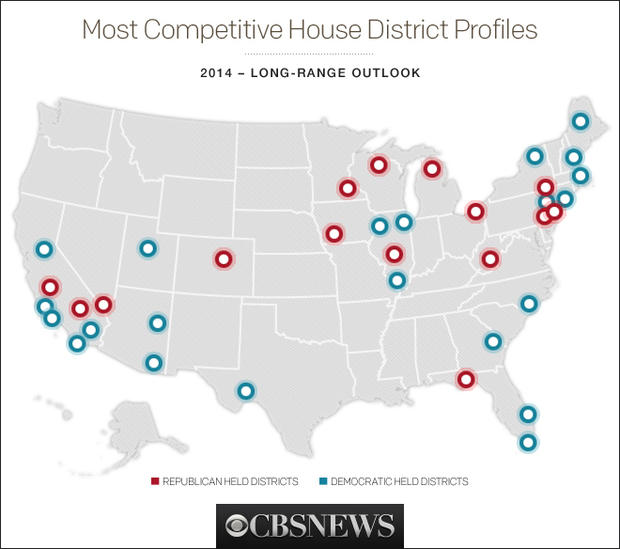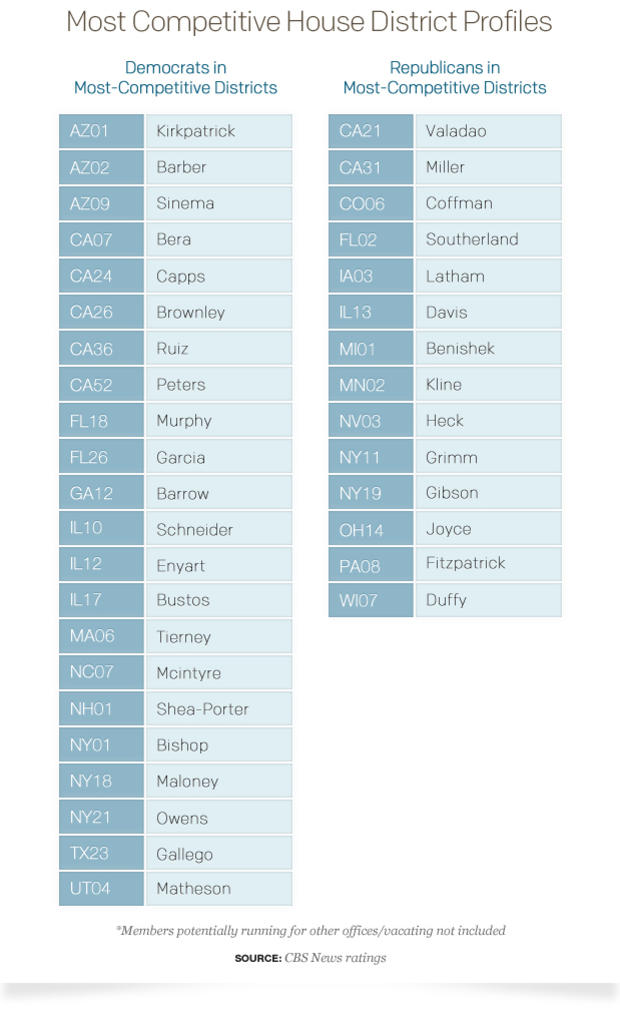House members in 2014 spotlight as Syria vote looms
Come election time, votes on military matters are always memorable.
Iraq was critical to the 2002 and 2006 House midterms; and just ask Hillary Clinton, whose vote on Iraq from the Senate cost her in the Democratic primaries five years later. For some House members in competitive districts for 2014, this is one balancing act they'll have to get right; they can't afford to anger their base or independents, balancing the risks of either a primary challenge or a general election loss. Nor can they afford to look like they were on the wrong side of history if a military action goes well. And it's impossible to know in advance how the politics will play.
The 2014 landscape puts the spotlight on a few members whose districts are likely to be in play next year. That doesn't mean this vote will make or break them, but these are districts (and members) we were watching for next year, even before the Syria crisis.
The most competitive Democratic-held districts: AZ-1, AZ-2, AZ-9, CA-7 , CA-24, CA-26, CA-36, CA-52, FL-18, FL-26, GA-12, IL-10, IL-12, IL-17, MA-6, NH-1, NY-1, NY-18, NY-21, NC-7, TX-23, UT-4
The most competitive Republican-held: CA-21, CA-31, CO-6, FL-2, IL-13, IA-3, MI-1, MN-2, NV-3, NY-11, NY-19, OH-14, PA-8, WI-7 *Districts with vacating members omitted
Right now most Americans disapprove of the idea of action, but as the administration makes its case and if things go well, that could change, and members know it. Invariably they say - and act - on the best interests of the country, but the reality is voters often judge this vote in retrospect, whether the action turns out well or not. For both Democrats and Republicans, there's the balancing act, too, of how voters see an association with the president and how they see the crisis. Independents, Democrats and most Republican voters are majority opposed in the latest Pew poll.
Overall, the GOP has a strong edge to keep the House - there simply are too many districts that lean or are solidly conservative. But it's early, and the battleground landscape will take us to new corners of the country next year than those well-trod swing states of 2012. While we'll probably see a couple of districts in Ohio and Florida in play, we'll also see plenty more battles in the northeast and in the west, with many in California.
Midterms often skew conservative because they've had older, whiter composition; Democrats' challenge will also be to make next year demographics look more like 2012's than 2010's. But Syria is the kind of vote that could lead parts of the Democratic base to turn out, either against a member who angers the party's more anti-war groups, or to rally to the side of a member who backed a successful effort by the president.
For the moment, our lists are derived mainly from our partisan indexes of the voters there along with some factors for the candidates, incumbency, recruiting, and recent demographics. This is a list that can and will change over time. On the other hand, in this starkly partisan environment, the partisan profiles of districts can become self-fulfilling prophecies, as it gets hard to for potential candidates to fund and mount challenges in districts that show even a few points of partisan imbalance, if they want to buck the odds at all.


